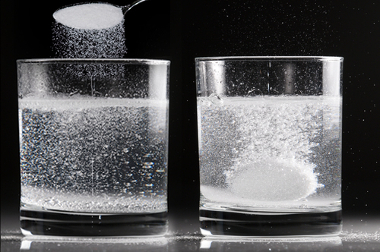Samples of any element are difficult to find with 100% purity, this is only possible in the production of drugs and very careful analyses. Let's look at an example of an impure sample: Pyrite, through it, iron can be produced.
Pyrite is an ore found in nature that contains in its composition the elements gold, copper, nickel and cobalt. The industry uses this ore at the percentage of 92% purity, that is, in 100 parts by mass of pyrite, 92 parts are FeS2 and the other 8 parts are impurities (other elements).
Learn now how to obtain the mass amount of a product extracted from an impure sample:
Calculate the mass of the pure part of the sample:
Example: Magnesium oxide is produced by the reaction of magnesium with oxygen. Suppose we took 120 mg of magnesium with 80% purity and reacted with oxygen, what would the mass of magnesium oxide produced look like?
Molar mass Mg = 24 g mol, MgO = 40 g mol
2 Mg + O2 → 2 MgO
Magnesium mass = 96 g
The mass of magnesium oxide would be 160 g.
These calculations are important to ascertain the exact amount of reagent needed to obtain a certain product.
Do not stop now... There's more after the advertising ;)
By Líria Alves
Graduated in Chemistry
Brazil School Team
Stoichiometry - Physicochemical - Chemistry - Brazil School
Would you like to reference this text in a school or academic work? Look:
SOUZA, Líria Alves de. "Calculation of mass for impure samples"; Brazil School. Available in: https://brasilescola.uol.com.br/quimica/calculo-massa-para-amostras-impuras.htm. Accessed on June 27, 2021.


